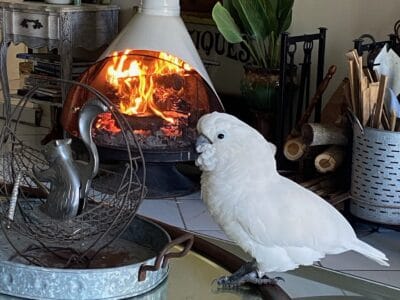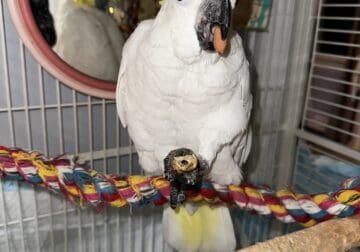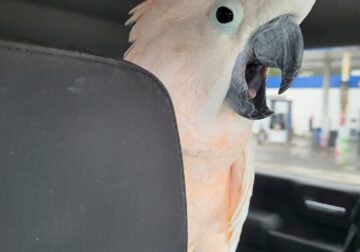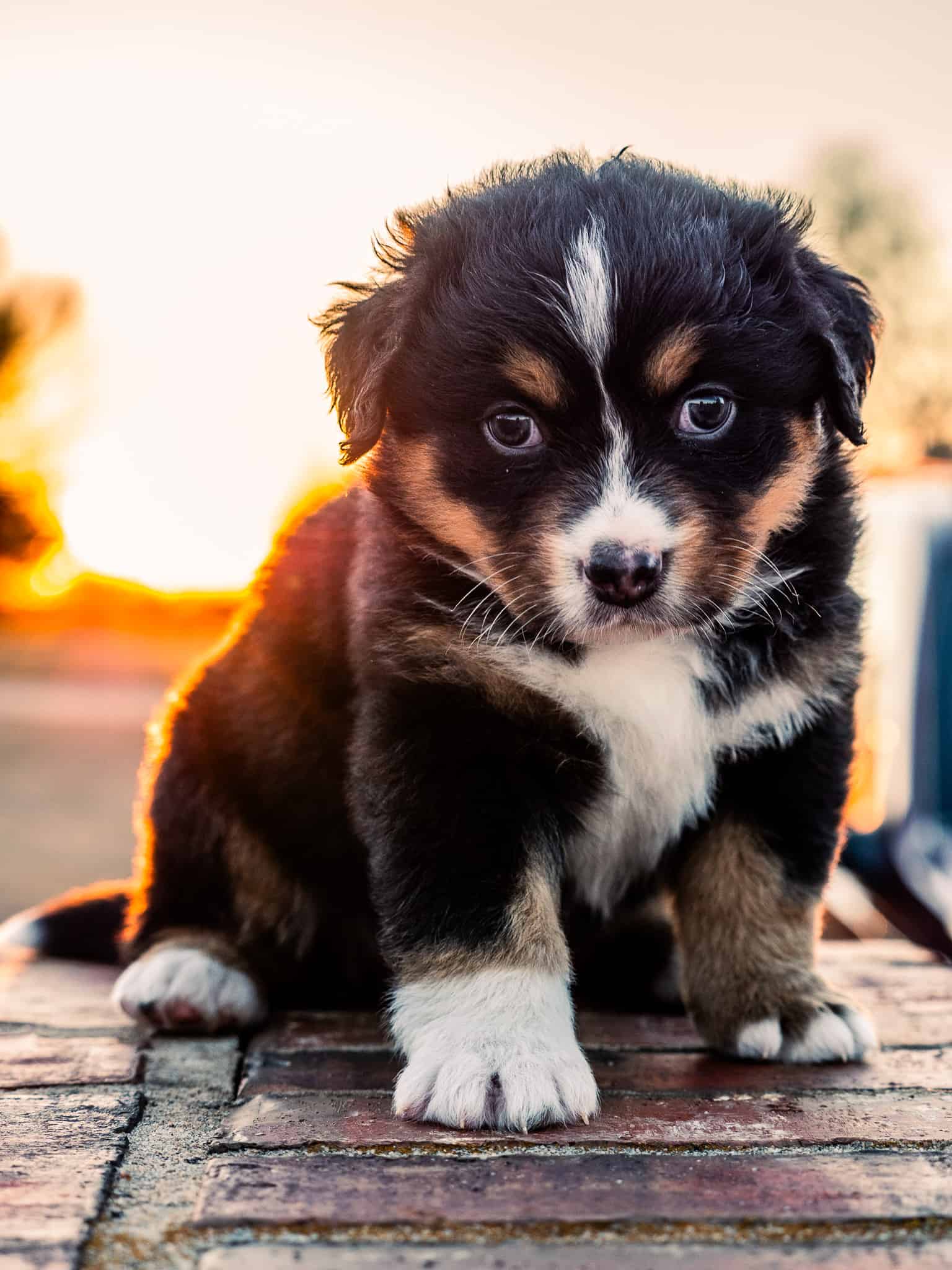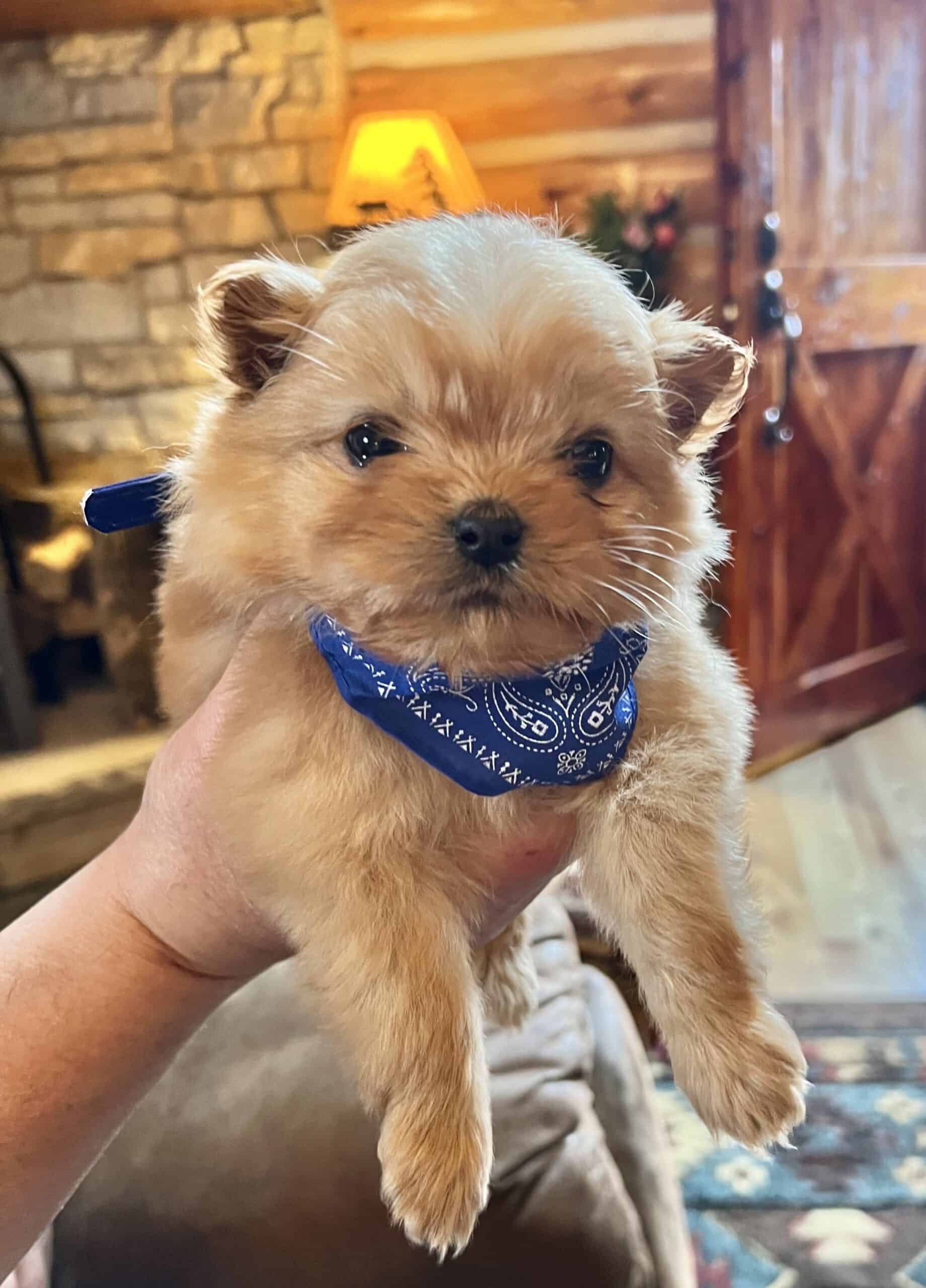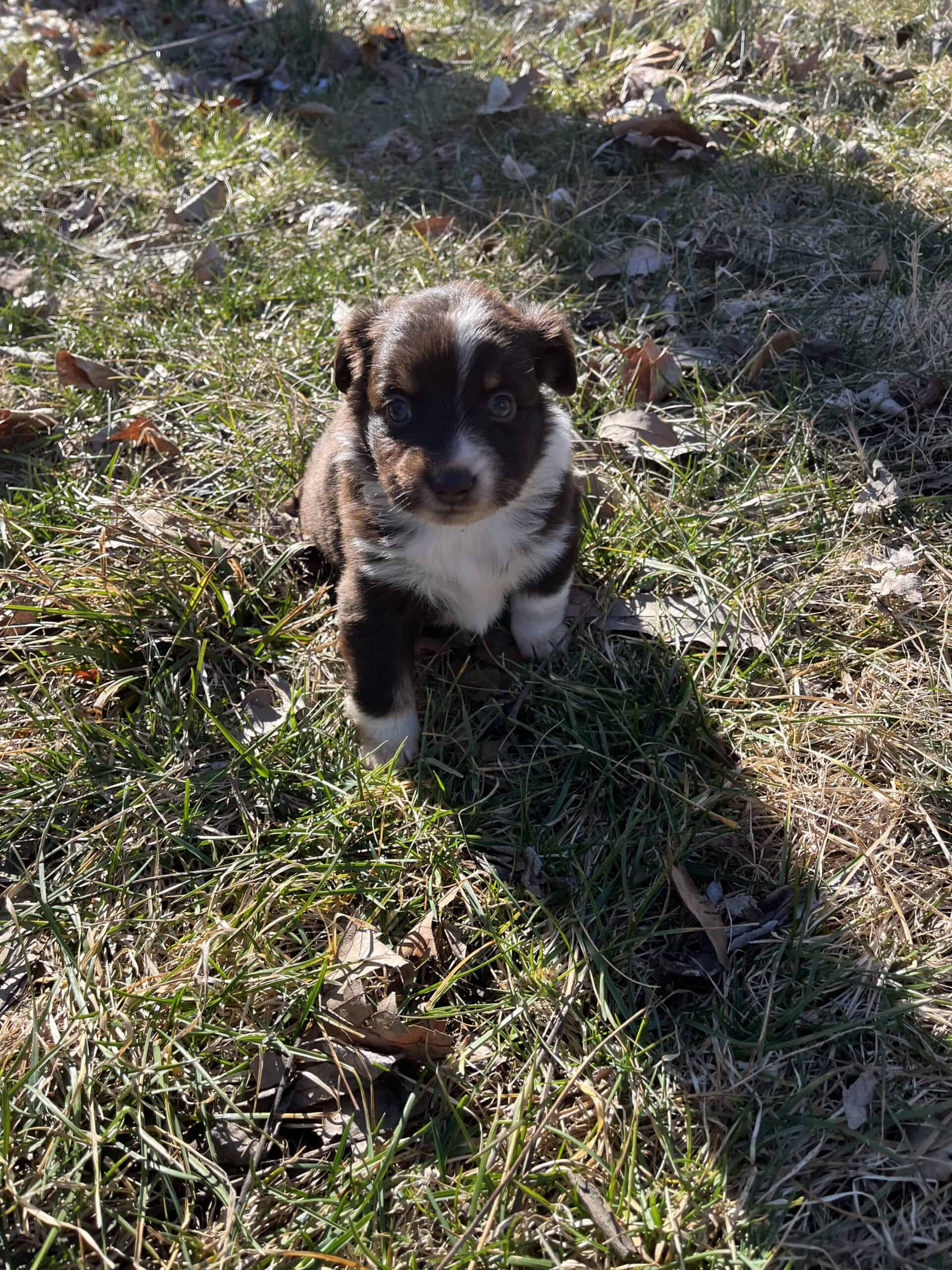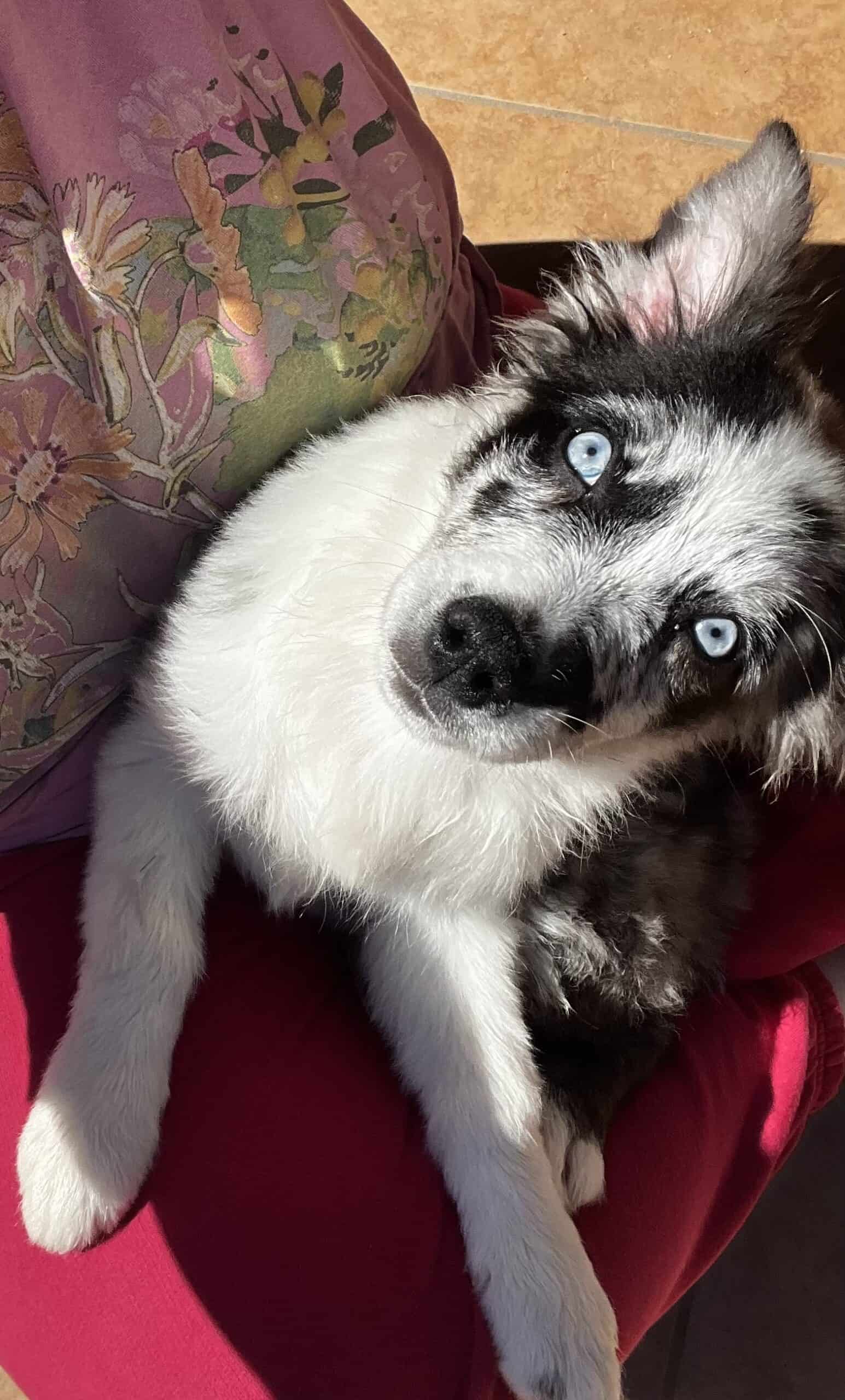Cockatoo for Sale: Crested Lovely and Loving Parrot
A cockatoo for sale makes an excellent pet only for those owners with an abundance of time to spend with a feathered friend. Since most cockatoos become closely attached to their mates in the wild, they expect to share just as tight a bond with their human caretakers. Cockatoos are typically large, strong birds with powerful beaks and not always good with children. They also tend to favor one person in a family. If you can center much of your life around the needs of a bird and provide an appropriate habitat and diet along with a plethora of toys, the attractive good looks and charming devoted personality of the cockatoo will appeal to you.
Baby Cockatoos for Sale
Baby cockatoos are ready to go to their new homes when they are 12 weeks or older. Larger species may be closer to 14 weeks old before they are fully weaned. When you are in the market for a pet cockatoo, it will save you a lot of headaches if you get a bird that can eat on its own. Even if you do not hand feed your bird, you will still have a strong and healthy bond. Hand rearing and feeding take experience, and newbie errors can be detrimental to a cockatoo. Whether you buy a baby or adult cockatoo, select birds that are outgoing with no discharge from the eyes, nares, or cloaca (opening near the tail on the abdomen for eliminating feces and urine). Their eyes should be bright and their feathers healthy and shiny.
What Is a Cockatoo for Sale?
A cockatoo is a crested parrot, differentiated from the cockatiel by a heavier weight, fewer and more solid colors, and a shorter and blunter tail. Cockatoos are usually primarily white with flashes of color under the wings and sometimes on the breast and in the crest. A few species are black, gray, or pink. Cockatiels often have a tremendous length with their long, tapered tail, but a cockatoo will be much taller when they stand side by side on a perch. They have a scimitar-style beak made for crushing large nuts. Some cockatoos learn a vast vocabulary, but they universally have loud raucous calls and high-pitched screeches compared to cockatiels. Cockatoos produce a powdery down to help them preen efficiently but which can be problematic for allergy sufferers.
Cockatoos for Sale Near Me
Cockatoos, belonging to the class of larger parrots, are popular for their engaging personalities and striking beauty. Known for their white plumage and prominent crests, cockatoos have several differences in looks based on the variation. Variations in personality between the cockatoo types are more subtle than changes in appearance. However, all pet species require a lot of interaction with their owners or other birds. They also need mental enrichment and physical exercise. Many of them are proficient talkers, another appealing characteristic that adds to their appeal.
Black Palm Cockatoo
The black palm cockatoo is one of the few members of the family that is not largely white.
- Size – 23 inches long, 32 to 42 ounces
- Colors – dark smoky gray, almost black, with a gray beak
- Crest – self-colored and long
- Cage – 10 feet long x 6 feet wide x 6 feet deep
- Lifespan – 80 to 90 years
- Temperament – not very affectionate; to become social this bird needs constant attention and training and is preferably hand-reared; not suitable for children or inexperienced owners
- Speech – human-like voice, one of the best cockatoo talkers; loud distinctive calls also
- Exercise – 3 to 4 hours outside of cage
- Training – can learn to be more affectionate, learns tricks
- Diet – 50% balanced cockatoo pelleted feed 50% fruits and vegetables, occasional shelled nuts for the beak
- Health – obesity, feather-picking, psittacine (parrot) beak and feather disease, kidney issues
Rose Breasted Cockatoo
The rosebreasted cockatoo is another representative of this pet avian family that is not white. A rose-breasted or Galah cockatoo is one of the few parrots in which you can visually differentiate the sexes. Males have a brown iris and females have a pink iris.
- Size – 12 to 15 inches long, 10 to 14 ounces
- Colors – bright pink lower face, breast, and abdomen; horn-colored beak; gray backs, wings, and feet
- Crest – pinkish-white
- Cage –
- Lifespan – 40 to 70 years
- Temperament – loudest at dawn and dusk; quiet relative to other cockatoos; loving and friendly; very needy and sensitive, require constant attention and companionship; sleep best with covered cage – need complete darkness
- Speech – imitate sounds, can become prolific talkers
- Exercise – 3 to 4 hours or more of activities outside of the cage; toys for chewing
- Training – learn tricks
- Diet – 1/4 cup pellets, 1/4 cup fruit and veggie salad each day
- Health – obesity, psittacine beak and feather disease, lipomas (fatty tumors), fatty liver disease
Moluccan Cockatoo or Salmon-Crested Cockatoo
In the wild, the Moluccan cockatoo is inseparable from its mate. They desire this same level of closeness with their owners.
- Size – 20 inches long, 1.8 pounds
- Colors – white with salmon-colored feathers on wings and breast, pale yellow or peach on wings’ undersides
- Crest – exceptionally full, bright pink at base
- Cage – largest possible; best if they have a room-sized aviary
- Lifespan – up to 70 years
- Temperament – screech for attention, affectionate, clingy, need constant attention and closeness, one-person birds typically, not suited for children
- Speech – mimic sounds, not great talkers, may yell
- Exercise – three or more hours outside cage daily
- Training – focus on social interaction, can learn to dance and do tricks
- Diet – 75% pellets, 25% fruits and vegetables; 1/2 cup of food a day
- Health – psittacine beak and feather disease, obesity, feather-picking
Major Mitchell’s Cockatoo
The Major Mitchell’s cockatoo is distinctive for its multi-colored crest.
- Size – 13 to 15 inches long, 14 ounces
- Colors – pinkish-white with bright pink on breast, under wings, and around the neck
- Crest – bright pink, yellow-orange, and white
- Cage – walk-in best, 4 feet long x 5 feet wide
- Lifespan – up to 60 years
- Temperament – cuddly, affectionate, forms tight bonds, clownish, high-energy, one-person bird, jealous
- Speech – high-pitched alarm call, chirps, can say basic words, mimic whistles and other sounds
- Exercise – 3 to 4 hours outside cage
- Training – can open latches
- Diet – 1/4 cup formulated diet, 1/4 cup produce daily; nuts, seeds, and human food sparingly
- Health – psittacine beak and feather disease, metal toxicity, sarcocystis
Goffin Cockatoo or Tanimbar Corella
Goffin’s cockatoos are small, no larger than a cockatiel. They are protected as a threatened species, and you need special permits and certifications of a captive-bred status to own one. Males have a black iris, and females have brown irises.
- Size – 12 to 13 inches long, 8 to 14 ounces
- Colors – white with pink bare skin on sides of beak, pale yellow feathers under the wings
- Crest – white, salmon color at base only visible when crest is up
- Cage – 24 inches long x 36 inches wide x 5 feet tall
- Lifespan – 30 to 40 years
- Temperament – exceptionally intelligent, escape artists, fun-loving, mischievous, social, loving
- Speech – a few words, mimic sounds, scream for attention
- Exercise – 3 to 4 hours outside cage
- Training – have problem-solving capabilities
- Diet – 75% pelleted or formulated feed, 25% fruits and veggies; 1 cup of total food daily
- Health – feather-picking, obesity, fatty liver disease, psittacine beak and feather disease
Sulfur-Crested Cockatoo
- Size – 18 inches long, 16 to 26 ounces
- Colors – white with pale yellow on undersides of wings; black beak and feet
- Crest – bright yellow
- Cage – 40 inches long x 40 inches wide x 60 inches tall; room-sized aviary is best
- Lifespan – up to 80 years
- Temperament – highly intelligent (comparable to a child 1 to 2 years old), affectionate, enjoys being handled, emotional
- Speech – ear-piercing shrieks, excellent at mimicking human speech
- Exercise – 3 to 4 hours outside cage
- Training – very trainable as a baby, can perform tricks
- Diet – 75% pellets, vegetables and fresh fruits
- Health – feather-picking, self-mutilation, rebellious behavioral issues, psittacine beak and feather disease, fatty tumors
Umbrella Cockatoo or White Cockatoo
The umbrella cockatoo gets its name from its elaborately full crest, among the most spectacular of all cockatoos. Relatively easy to sex, males are much larger and have a broader head as well as a larger beak. A male’s irises are almost black while a female’s are reddish-brown.
- Size – 18 inches long, 16 to 26 ounces
- Colors – white with pale yellow on undersides of wings; black beak and feet (may also be gray)
- Crest – white, umbrella-like fan when aroused
- Cage – need as large a space as possible; do not do well with confinement; room-sized aviary is best
- Lifespan – 40 to 60 years
- Temperament – affectionate, form tight bonds with owner (can become obsessive), docile, gentle, like to perform, cuddly
- Speech – not great talkers, not known for imitating sounds; loud screeches, squawks; may hiss
- Exercise – need 10 to 12 hours of sleep at night; 3 to 4 hours outside cage
- Training – very trainable, can perform complex tricks
- Diet – 80% pellets, 20% root vegetables, leafy greens, and fresh fruits
- Health – feather-picking, self-mutilation, psittacine beak and feather disease, obesity
Cockatoo Care
- Grooming – provide a shallow basin for your bird to bathe, or you need to mist feathers daily; a professional should trim beak if needed (should be rare except in older birds); nail and feather trim 2 or 3 times a year
- Love – birds need several hours of attention and interaction daily; if you are gone for long periods, get a second bird; some species can be left alone for up to 8 hours a day, but many not more than a couple of hours
- Diet – work with a veterinarian to help you assess body condition and figure out amounts of daily feed a bird should consume; amounts listed under the species are starting levels
- Exercise – should be supervised; Cockatoos should be able to exercise outside of their cages every day for a few hours or more
- Cage – a couple of different perches, water, bird-safe bedding; sufficient room to move around and spread its wings
- Toys – cockatoos frequently chew on wood in the wild; they need wood and leather toys; they need an active rotation of toys as they become bored easily
